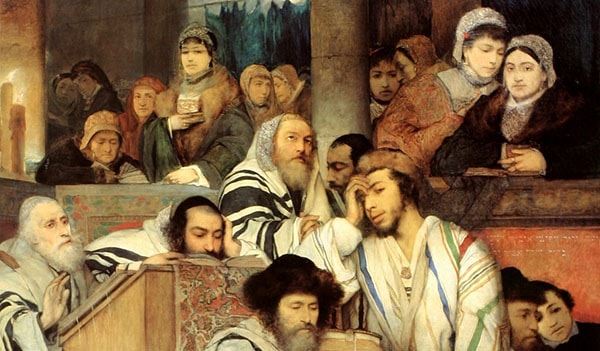Leslie Ginsparg Klein
When I was single, I stayed with my brother and sister-in-law for Yom Kippur every year. They lived next door to a yeshiva, and I much preferred the yeshiva-style davening to the standard synagogue service. While I typically wasn’t the most fervent shul-goer, Yom Kippur was different. I was present when davening started and there when it ended.
I managed to tap into the intensity of the day: the dread of Kol Nidrei; the heartfelt pleas of viduy; the emotion-packed crescendo of the room exploding at the end of Neilah, “Hashem hu ha-Elokim;” and the euphoria of the declaration, “Le-shana ha-ba bi-Yerushalayim!”
I was very comfortable in my Yom Kippur routine. Year after year, I sat in the same seat, wearing the same Steve Madden (non-leather) slides, using the same mahzor, anticipating the tune that was coming next. As I travelled the familiar and yet always emotional journey that is Yom Kippur, I had the full confidence of knowing that I was exactly where I needed to be in that moment, doing what I needed to be doing. I was in shul. Because that is what you do on Yom Kippur.
There is a level of simha in knowing you are doing the right thing.
Only that’s not what I do anymore. I haven’t been to shul on Yom Kippur in years. And I am okay with that.
Back in my yeshiva-going days, when my brother and I would go back to his house during the short break, my sister-in-law would greet us at the door with a smile. Drained from the hours in shul, I could barely muster a smile in return. She, on the other hand, was relaxed and upbeat. And I, still in the intense headspace of shul, couldn’t relate. To be so “chilled” on Yom Kippur seemed wrong. But now, that is me. And it is kind of nice.
These days, I don’t spend hours standing in shul, feeling the heaviness of the day, the intensity, the dread. These days, I spend Yom Kippur reading storybooks and playing board games. I try to talk with my kids a little about Yom Kippur, but I end up devoting more time to building elaborate structures out of Magnatiles. When I get tired, I rest and adjudicate inter-child disputes from the comfort of my couch. I also hang out with the other moms on the block as we have a steady stream of rotating playdates/tag team davening. With my friends’ and my husband’s help, somewhere along the day, I sneak in the five requisite Shemoneh Esrehs.
Towards the end of the day, the kids who are still awake daven the end of Neilah along with me. It’s not quite as impressive as at the yeshiva, but it still gets a little loud. It may be less inspiring, but it’s not just about me. It’s about sharing the meaning of the day with my kids.
Not every woman experiences Yom Kippur the same way. Thankfully, most shuls have groups, babysitting and families make other arrangements that allow women with young children to be in shul, at least part of the day. I hope that the available options continue to increase.
For me, staying at home works and makes the most sense. Sure, there are elements of being at home on Yom Kippur that are challenging. But during the many years I spent the Yomim Norai’m single, the primary thing I davened for was to be in this stage of life. While there is certainly much to daven for today, and I could daven more effectively in shul, I can’t feel upset. My prayers were answered.
While this most definitely is not the Yom Kippur of my single years, this is the reality of my stage of life. So I don’t feel guilty for not missing being in shul. And I don’t feel guilty for being less intense and more relaxed. Instead, I have the full confidence that I am exactly where I need to be in the moment, doing what I need to be doing. And there is simha in that too.










 Site Operations and Technology by The Berman Consulting Group.
Site Operations and Technology by The Berman Consulting Group.